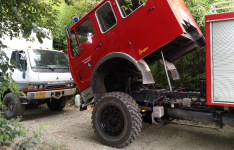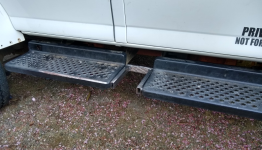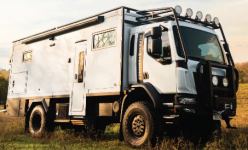ReluctantTraveler
Well-known member
My DIY plans have always centered around a long-nose truck (somewhere in the F-350/3500 -> F-550/5500 range) with a cabover sleeper. But lately, the compact maneuverability of 4x4 cabover trucks (notably EarthCruiser and their Core program) have started to catch my eye.
What are the pros and cons of one versus the other?
A few things that immediately come to my mind...
What are the pros and cons of one versus the other?
A few things that immediately come to my mind...
- Long-nose trucks generally provide a more comfortable ride, and a bit of increased safety in an accident.
- Cabover trucks provider super views and visibility.
- Cabover trucks are harder to work on because the engine compartment is under the seating area.
- Long-nose trucks are (potentially) more expensive in today's truck market.
- Crew cab/dual cab cabovers (a requirement for us) are harder to find than crew cab long-nose trucks.
- While cabover trucks have a shorter footprint, you also often lose the cab-over sleeper because of their height, meaning you end up with a smaller living space OR a truck that ends up being the same length for a similar layout.




